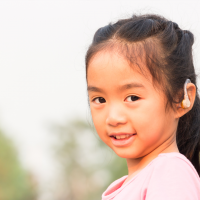Search results
- All (1276)
- Research Digests (210)
- Topics (15)
- Events (184)
- Blog (833)
- Podcasts (118)
- Free View (185)
-

Utilization of peer-supported youth hotlines is on the rise
New data suggest that there has been a significant increase in the use of a peer-supported youth hotline between 2010 (~8,000 annual contacts) and 2016 (>12,000 annual contacts). Berit Kerner and colleagues evaluated >67,000 contacts made to a hotline based in Los Angeles, USA.
Read more -

What mechanisms underlie reduced social attention in people with ASD?
A key predictor of an autism spectrum disorder (ASD) diagnosis is attenuated attention to social stimuli.1 Thus far, the reasons underlying this abnormality are unknown: some have hypothesized reduced social motivation2 while others have suggested aberrant oculomotor function in affected individuals.3
Read more -

Early deprivation is linked to long-term social communication difficulties
Maltreatment affects a staggering 1 billion children worldwide. Most of these maltreated children, but particularly those raised in institutions that are characterized by deprivation, experience some form of neglect. These children seem to be at risk of developing social, cognitive and psychiatric difficulties later in life.
Read more -

Social cohesion and integration in schools reduces suicidal behaviour rate
Emerging data suggest that strengthening positive social bonds and improving social integration might reduce suicidal behaviours in youth to date; little research has studied the effect of social integration, on suicide behaviours, with reference to a young person’s social network structure — namely, an individual’s position within their network and the patterns of relationships among members of the network.
Read more -

Early social communication intervention reduces autism severity in young infants
The first, very early social communication intervention for infants at high risk of autism shows promise to reduce the overall severity of early symptoms and a capacity to positively enhance parent–child social interactions.
Read more -

Insufficient sleep might affect children’s emotional health
Data from a new study published in the Journal of Child Psychology and Psychiatry suggest that insufficient sleep can affect emotional health in children. The study, conducted by Candice Alfano and colleagues, assessed the impact of sleep duration on different aspects of emotion in a cohort of 53 children aged 7-11 years old.
Read more -

A machine learning approach identifies unique predictors of borderline personality disorder
Researchers in the USA have identified critical predictors of borderline personality disorder (BPD) in late adolescence, using a machine learning approach. Joseph Beeney and colleagues harnessed data from a large, prospective, longitudinal dataset of >2,400 girls who were evaluated yearly for various clinical, psychosocial and demographic factors.
Read more -

Online self-harm content might provide peer support to young people
Youth today find themselves living in an era of social media, with easy access to a wide range of social networking sites. Unfortunately, emerging evidence suggests that some social technologies might cause more harm than good to some young people’s mental health.1,2
Read more -

Implementing mental health support in schools faces many challenges
Researchers identified 50 studies that reported barriers or facilitators to implementing interventions for adolescent emotional disorders delivered in educational settings. They found several important factors, including barriers of practical and logistical problems, and facilitators of quality training and supervision.
Read more -

Mental Health in Deaf Children
The most recent study of mental health in deaf children in England showed that 26% in a sample of 144 signing deaf children and young people not currently accessing child mental health services had a probable mental health problem and 57% had a possible mental health problem.
Read more
